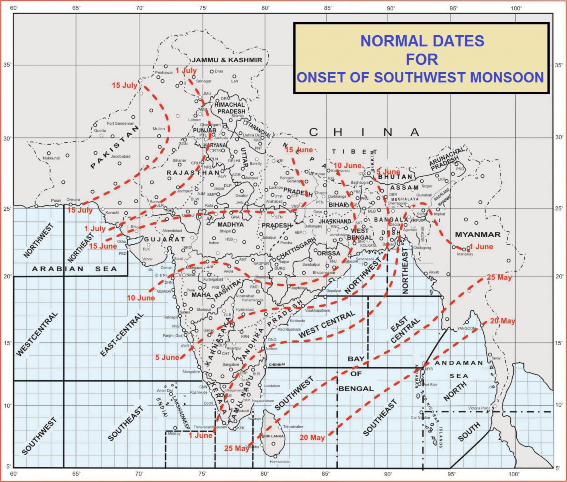3.4. Onset and Advance of Monsoon
The differential heating of land and sea is still believed to be the primary cause of the monsoon by many meteorologists. Low pressure at ITCZ which is located over north India in month of
May becomes so intense that it pulls the trade winds of the southern hemisphere northwards (Figure – summer monsoon winds). These southeast trade winds cross the equator and enter the Bay of Bengal and the Arabian Sea, only to be caught up in the air circulation over India. Passing over the equatorial warm currents, they bring with them moisture in abundance. With the northwards shift of ITCZ, an easterly jet stream develops over 15oN.
The rain in the south-west monsoon season begins rather abruptly. One result of the first rain is that it brings down the temperature substantially. This sudden onset of the moisture-laden winds associated with violent thunder and lightning, is often termed as the “break” or “burst” of the monsoons.
Southwest monsoon first of all reaches in Andaman-Nicobar Islands on 15th May. Kerala coast receives it on 1st June. It reaches Mumbai and Kolkata between 10th and 13th June. By 15th of July, Southwest monsoon covers whole of India (Figure 10).

